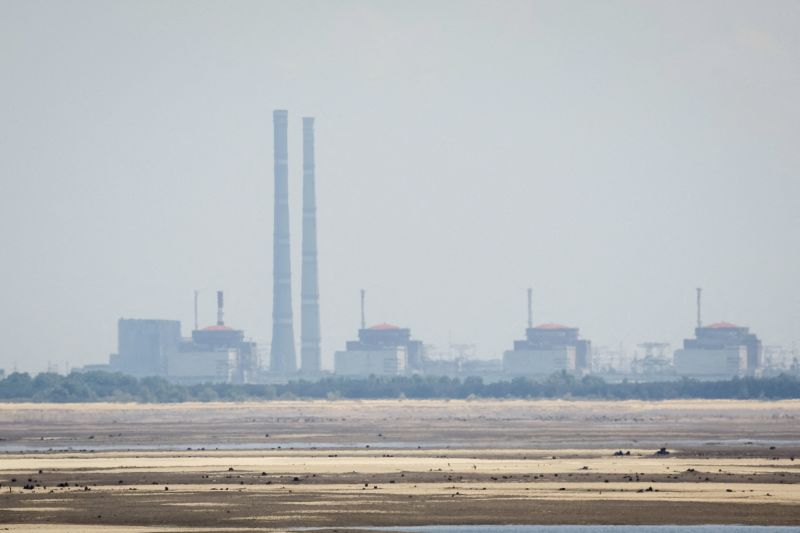
Safety at Russian-controlled Zaporizhzhia Nuclear Power Plant is deteriorating, IAEA warns
The safety situation at Ukraine’s Zaporizhzhia Nuclear Power Plant is deteriorating after a drone strike on a nearby road, the United Nations’ energy watchdog warned Saturday.
The plant, in southern Ukraine, has been under Russian control since March 2022.
“Yet again we see an escalation of the nuclear safety and security dangers facing the Zaporizhzhia Nuclear Power Plant. I remain extremely concerned and reiterate my call for maximum restraint from all sides and for strict observance of the five concrete principles established for the protection of the plant,” the International Atomic Energy Agency’s (IAEA) Director General Rafael Mariano Grossi said in a press release Saturday.
The power plant informed the IAEA that a drone struck just outside the plant’s protected area near the “essential cooling water sprinkler ponds and about 100 meters from the Dniprovska power line, the only remaining 750 kilovolt line providing a power supply to (the power plant),” an IAEA statement said.
The IAEA team visited the area and reported that the damage seemed to have been caused by a drone. There were no casualties and no damaged equipment, but the road was damaged between the two main gates to the plant.
Russian state media outlet TASS claimed that staff at the power plant had accused Ukraine of the drone strike.
“At 7 a.m. Moscow time, the Ukrainian drone dropped a shell on the road that runs along the power units outside the perimeter. Personnel use this road all the time. No one was injured, but once again a direct threat to the safety of personnel and the plant was created,” it said.
Ukraine has not yet publicly commented on the strike. However, Russia and Ukraine have blamed previous incidents at the plant on each other.
Last weekend, Ukrainian President Volodymyr Zelensky said that Russian forces started a fire at the plant, showing a video of a large plume of smoke coming out of one of the towers on the plant’s territory, but several Russian officials said Ukraine was behind the incident.
The IAEA team reported Saturday that there has been heavy military activity in the area for the last week.
“A significant fire at one of the (Zaporizhzhia Nuclear Power Plant) cooling towers earlier this week resulted in considerable damage, although there was no immediate threat to nuclear safety,” the IAEA added.
There were also air raid alarms and drone attacks at the Khmelnytskyy, Rivne and South Ukraine nuclear power plants, as well as at the Chernobyl site, according to the IAEA.
“Nuclear power plants are designed to be resilient against technical or human failures and external events including extreme ones, but they are not built to withstand a direct military attack, and neither are they supposed to, just as with any other energy facility in the world,” Grossi said. “This latest attack highlights the vulnerability of such facilities in conflict zones and the need to continue monitoring the fragile situation.”
Grossi added that he was willing to visit the Zaporizhzhia plant.
Meanwhile, TASS reported that Grossi had also been invited to visit a nuclear power plant in Kursk, the region of southern Russia where Ukrainian forces have launched a growing incursion.
“An invitation to visit the Kursk Nuclear Power Plant and its satellite city of Kurchatov in the nearest future has been relayed to the head of the IAEA. It is an uncommon, but a very timely and important step,” Russian Permanent Representative to international organizations in Vienna Mikhail Ulyanov said on his Telegram channel Saturday.
Andrii Kovalenko, head of the Countering Disinformation Center of the National Security and Defense Council of Ukraine, said on Friday that “Russia may be preparing a nuclear provocation. Their scenario of accusing us of terrorism and an offensive on the Kursk Nuclear Power Plant did not work, and now they are lying about a ‘dirty bomb’ and our possible provocation.”
